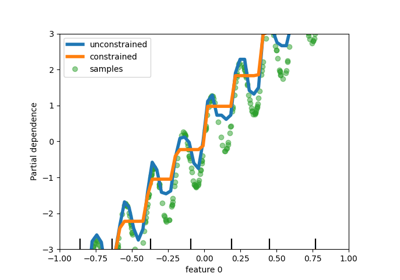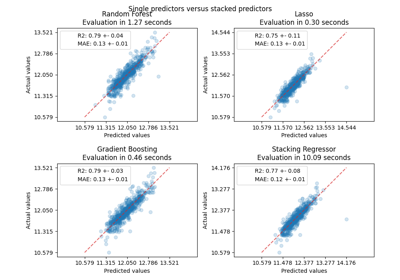备注
Go to the end 下载完整的示例代码。或者通过浏览器中的MysterLite或Binder运行此示例
NPS估计器和复杂管道#
此示例说明了显示估计器和管道的不同方式。
# Authors: The scikit-learn developers
# SPDX-License-Identifier: BSD-3-Clause
from sklearn.compose import make_column_transformer
from sklearn.impute import SimpleImputer
from sklearn.linear_model import LogisticRegression
from sklearn.pipeline import make_pipeline
from sklearn.preprocessing import OneHotEncoder, StandardScaler
紧凑的文本表示#
当显示为字符串时,估计器将仅显示已设置为非默认值的参数。这减少了视觉噪音,并使在比较实例时更容易发现差异。
lr = LogisticRegression(penalty="l1")
print(lr)
LogisticRegression(penalty='l1')
富HTML表示#
在笔记本中,估计器和管道将使用丰富的HTML表示。这对于总结管道和其他复合估计器的结构特别有用,并通过交互性提供细节。 单击下面的示例图像以展开Pipeline元素。 看到 可视化复合估计器 了解如何使用此功能。
num_proc = make_pipeline(SimpleImputer(strategy="median"), StandardScaler())
cat_proc = make_pipeline(
SimpleImputer(strategy="constant", fill_value="missing"),
OneHotEncoder(handle_unknown="ignore"),
)
preprocessor = make_column_transformer(
(num_proc, ("feat1", "feat3")), (cat_proc, ("feat0", "feat2"))
)
clf = make_pipeline(preprocessor, LogisticRegression())
clf
Total running time of the script: (0分0.029秒)
相关实例
Gallery generated by Sphinx-Gallery <https://sphinx-gallery.github.io> _




